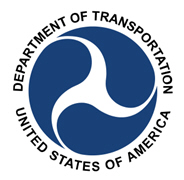  
Back To News/PR Index | 
| USDOT: November 2014 Passenger Airline Employment Data | The November 2014 FTE total for scheduled passenger airlines was 5,688 more than in November 2013. Scheduled passenger airline categories include network, low-cost, regional and other airlines. Historical employment data can be found on the BTS web site. The five network airlines that collectively employ two-thirds of the scheduled passenger airline FTEs reported 0.4 percent more FTEs in November 2014 than in November 2013. Alaska Airlines, Delta Air Lines, American Airlines and US Airways increased FTEs from November 2013 while United Airlines reduced FTEs. Network airlines operate a significant portion of their flights using at least one hub where connections are made for flights to down-line destinations or spoke cities. The six low-cost carriers – Spirit Airlines, Allegiant Airlines, Frontier Airlines, JetBlue Airways, Southwest Airlines and Virgin America – all reported increases in FTEs from November 2013. Low-cost airlines operate under a low-cost business model, with infrastructure and aircraft operating costs below the overall industry average. Among the 13 regional carriers, eight – PSA Airlines, Mesa Airlines, Republic Airlines, Envoy Airlines, Compass Airlines, Horizon Air, SkyWest Airlines and Shuttle America – reported increased employment levels from November 2013. The others reported decreases. Regional carriers typically provide service from small cities, using primarily regional jets to support the network carriers’ hub and spoke systems. Carrier Groups: The five network airlines employed 66.4 percent of the total number of FTEs employed by all scheduled passenger airlines in November, the six low-cost carriers employed 18.9 percent and the 13 regional carriers employed 13.1 percent. The three airlines with the most FTEs in November – United, Delta and American – employed 55.6 percent of the month’s total passenger airline FTEs. Top Employers by Group: United employed the most FTEs (78,890) in November among the network airlines, Southwest employed the most FTEs (46,299) among low-cost airlines, and Envoy employed the most FTEs (11,661) among regional airlines. Four of the top five employers in the industry are network airlines. Airline Mergers: Airlines that announce mergers typically begin joint reporting following U.S. Department of Transportation approval and issuance of a single economic certificate. Southwest and AirTran Airways began joint reporting of their financial data, including employment numbers, in April 2012 under a waiver granted by the Department, while continuing to report all other data as separate carriers. American and US Airways, following their December 2013 merger announcement, will report separately until the Department approves single carrier reporting and a single economic certificate is issued. In March 2014 (for January 2014 data), the Department began displaying combined on-time performance data, mishandled baggage data, oversales data and complaint data in its Air Travel Consumer Report for Southwest and Air Tran, as well as for American and U.S. Airways, because both sets of airlines are sufficiently integrated that consumers perceive them as a single airline. The Air Travel Consumer Report also continues to display the separate performance data of each of these airlines and will continue to do so until a single economic certificate is issued. Network Airlines Recent Changes: The network airlines employed 909 more FTEs in November 2014 than in November 2013, a 0.4 percent increase. Four of the five network carriers reported FTE increases from November 2013 while United reported a decrease. Longer-term Changes: The network airlines employed 143 more FTEs in November 2014 than in November 2010, a 0.1 percent increase. American (-7.3 percent) reported a decrease in FTE employment from 2010 to 2014 while Alaska (12.9 percent), US Airways (7.0 percent) and Delta (3.2 percent) reported increases. United’s numbers for 2010 and 2014 are not directly comparable because of the intervening merger. United reported 3.7 percent more FTEs in November 2014 than United and Continental Airlines reported separately in November 2010. Low-Cost Airlines Recent Changes: The six low-cost airlines reported 5.2 percent more FTEs as a group from November 2013 to November 2014. All six low-cost airlines reported increases. Longer-term Changes: The low-cost carriers employed 8,355 more FTEs in November 2014 than in November 2010, up 12.9 percent. Spirit reported the largest percentage increase, 107.5 percent, while Frontier was the only low-cost carrier to report a decline, -26.1 percent. November 2014 numbers for Southwest are not directly comparable to 2010 because of the intervening merger. Southwest reported 8.0 percent more FTEs in November 2014 than Southwest and AirTran reported separately in November 2010. Regional Airlines Recent Changes: Regional airlines increased FTEs by 1.5 percent in November 2014 compared to November 2013. PSA and Mesa reported the largest percentage increases. Chautauqua Airlines and Air Wisconsin reported the largest percentage decreases. Longer-term Changes: The 13 regional carriers operating in November employed 3.9 percent fewer FTEs in 2014 than the 18 carriers reporting in November 2010. Air Wisconsin and Horizon reported declines. GoJet reported the biggest four-year percentage gain. The ExpressJet/Atlantic Southeast combination reported 4.0 percent fewer FTEs in November 2014 than the two airlines reported separately in November 2010. The Endeavor/Mesaba combination reported 36.8 percent fewer FTE’s in November 2014 than the two airlines reported separately in November 2010. Envoy operated as American Eagle prior to April 2014. Endeavor operated as Pinnacle prior to November 2013. Reporting Notes Airlines that operate at least one aircraft that has more than 60 seats or the capacity to carry a payload of passengers, cargo and fuel weighing more than 18,000 pounds must report monthly employment statistics. The “Other Carrier” category generally reflects those airlines that operate within specific niche markets such as the Hawaiian Islands served by Hawaiian Airlines and Island Air Hawaii. Data are compiled from monthly reports filed with BTS by commercial air carriers as of Jan. 14. Additional airline employment data and previous press releases can be found on the BTS website. BTS has scheduled release of December passenger airline employment data for Feb. 19. Media
Contact:
|
